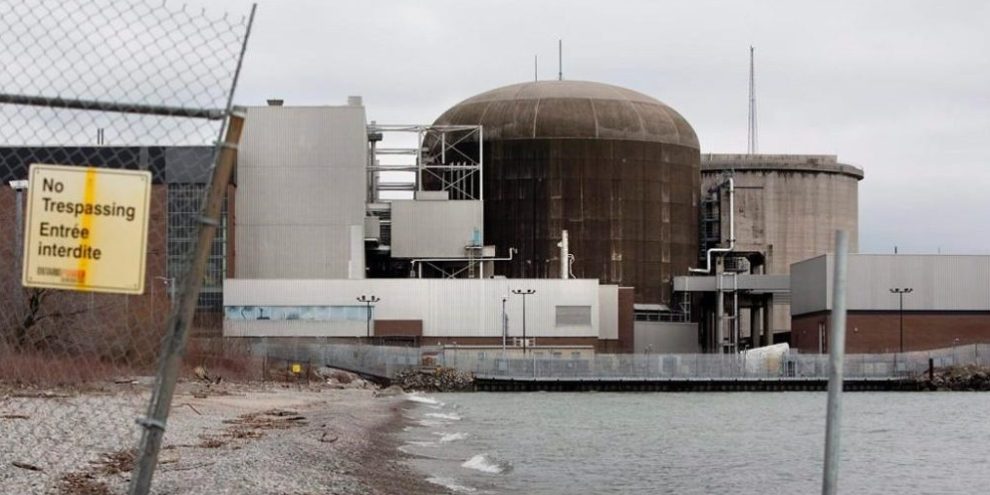
Allison Jones, The Canadian Press
Ontario’s electricity system is searching for more power producers as demand rises and a major nuclear plant nears retirement, a process likely to secure more natural gas generation while the government seeks to end reliance on it.
It means that for at least the next two decades, greenhouse gas emissions from the electricity sector are set to increase.
But the electricity system operator says Ontario is already using hydro to its max, while solar and wind power rely on the weather, and natural gas generation can provide the reliability and flexibility needed to support green initiatives and an ensuing increase in electricity demand, such as from electric vehicles and electric arc furnaces in steelmaking.
By about 2038, the Independent Electricity System Operator projects that net greenhouse gas emission reductions from electric vehicles will offset electricity sector emissions.
While the IESO has acknowledged that more gas generation will be needed in the near term, Energy Minister Todd Smith has asked it to explore a moratorium on new gas plants.
"We want to get to net zero in the electricity grid," Smith said in an interview.
But he noted that an IESO report last year examining whether natural gas generation could be phased out by 2030 found that it would lead to rotating blackouts and higher electricity bills.
"We have to ensure that we have a reliable system and one that’s affordable, and if we have an affordable electricity system, then we’re going to see electrification happen in other areas to reduce emissions," he said.
Interim NDP leader Peter Tabuns, also the party’s energy critic, said it’s hard to reconcile the pursuit of more gas generation at the same time as exploring a moratorium.
"They’re stepping on the gas and hitting the brake at the same time," he said.
"I would say that their interest in getting more proposals for gas plants is probably far more an indicator of where they’re going than any words about ’Tell us what we can do about reducing gas burning in the future.’"
Rupp Carriveau, director of the Environmental Energy Institute at the University of Windsor, said Ontario should wean itself off natural gas generation, but it’s very difficult to do.
"It’s incredibly reliable, it’s quite efficient, and it until recently had been quite cost−effective," he said.
"But to me, it’s a little bit disappointing that there isn’t more of a focus on pushing more renewables even though they are apples and oranges, for sure."
Renewable energy in Ontario comes with a fair amount of political baggage. Electricity prices became a major source of anger ahead of the 2018 election that saw the Liberals reduced from a majority government to losing official party status.
Bills had roughly doubled over the course of a decade due in part to the Liberals’ green energy initiatives, which saw consumers pay above−market rates to power producers who had long−term contracts.
The Progressive Conservatives cancelled 750 of those contracts during their first term, saying the province didn’t need the power and the contracts were driving up costs for ratepayers.
Tabuns said those cancellations have made the supply situation worse.
"There’s just no two ways about it," he said.
The energy minister said while Ontario is looking at a supply gap "for a short period of time until we get those nuclear reactors back on the grid," cancelling the green energy contracts was the right thing to do
"Those projects were going to continue to make the system unreliable and expensive," Smith said.
"They weren’t going to fill the reliable, affordable electricity gap that we’re experiencing. We’ve seen that unfortunately, with renewables, they’re not able to fill the gap on a reliable basis. So we would continue to have to back up with other forms of generation to balance the need."
The Pickering Nuclear Generating Station – which accounted for 14 per cent of electricity generation last year – is set to start a phased shutdown in 2024.
Other nuclear units are undergoing refurbishment this decade, with several out of service at a time in overlapping schedules. The IESO says it’s confident it can fill the nuclear gap with the procurement it’s undertaking.
But even as those units come back online, the IESO projects a growing supply gap of electricity, as broader electrification takes off, particularly in the transportation sector.
Demand from growth in electric vehicles and electrifying public transportation is expected to rise much more quickly starting in about 2035. Around then, the projected gap between needed and available electricity is expected to hit 5,000 megawatts – enough to power five million homes – during the summer, even if all current power producers renew their contracts.
A spokesperson for the IESO said the current procurement process will address Ontario’s resource needs into the next decade, and the operator is looking at adding more in order to keep the grid reliable over the long term.
It is looking to include more non−emitting resources to the generation portfolio, including small modular nuclear reactors and storage capacity, as well as new energy efficiency programs.
Smith asked the IESO to provide recommendations this month on new conservation initiatives. It is also set to report back to him in November on the potential gas moratorium as well as a plan to get to zero emissions in the electricity sector.
banner image: The Canadian Press






